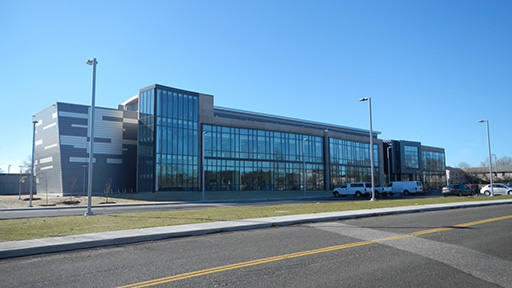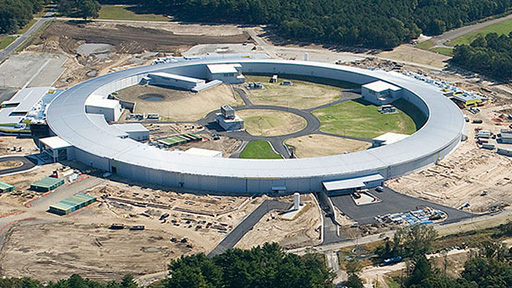Projects
Interdisciplinary Science Building (ISB)

The approximately 80,000 gsf 2-story state-of-the-art building will be a new energy efficient and environmentally sustainable laboratory building that will provide modern, 21st-century, high-accuracy laboratories, offices and support functions. The building will intellectually group existing energy research scientists into one facility with collaborative environments to facilitate and realize the scientific benefits of multi-disciplinary collaboration.
The Interdisciplinary Science Building will focus on energy-related R&D enabling breakthroughs in the effective uses of renewable energy through improved conversion, transmission and storage. As materials are the linchpin to energy technologies, the ISB will consolidate BNL’s efforts in the synthesis and detailed characterization of bulk-, thin film-, and nano-materials and in device fabrication, which are supported by an outstanding and complete set of complementary tools, i.e., the Center for Functional Nanomaterial’s (CFN), the National Synchrotron Light Source (NSLS), the New York Blue supercomputer, and in the future NSLS-II.
By bringing together a broad spectrum of energy-related researchers in a single location, the ISB will foster energy research that spans discovery through deployment. It will also serve as a portal for collaboration with industry, universities, and other National Laboratories.
Cost: $66.8 Million
Sponsor: U.S. Department of Energy, Science Line Item Program
Schedule completion: June 2013
National Synchrotron Light Source II

NSLS-II will be a new state-of-the-art, medium-energy electron storage ring (3 billion electron-volts) designed to deliver world-leading intensity and brightness, and will produce x-rays more than 10,000 times brighter than the current NSLS. The superlative character and combination of capabilities will have broad impact on a wide range of disciplines and scientific initiatives, including the National Institutes of Health’s structural genomics initiative, DOE’s Genomics:GTL initiative, and the federal nanoscience initiative.
The facility will be a key resource for researchers at Brookhaven’s Center for Functional Nanomaterials, allowing for analysis of new materials that are expected to transform the nation’s energy future. Construction of the NSLS-II’s ring building began in March 2009 and is scheduled to be completed in 2015.
Sponsor: U.S. Department of Energy (DOE), Office of Science, Office of Basic Energy Sciences
Cost: $912 million to design and build


